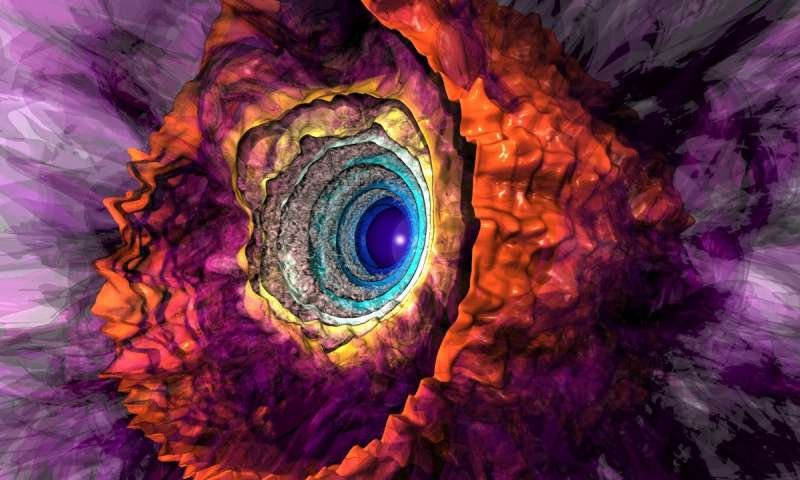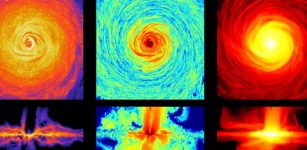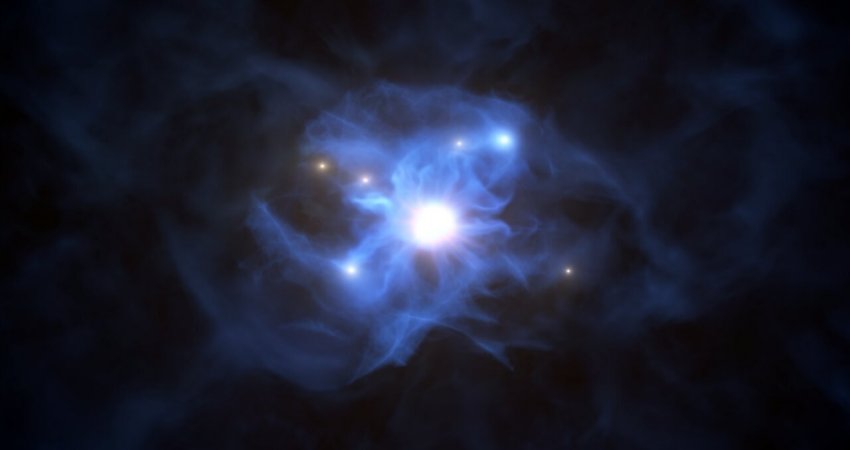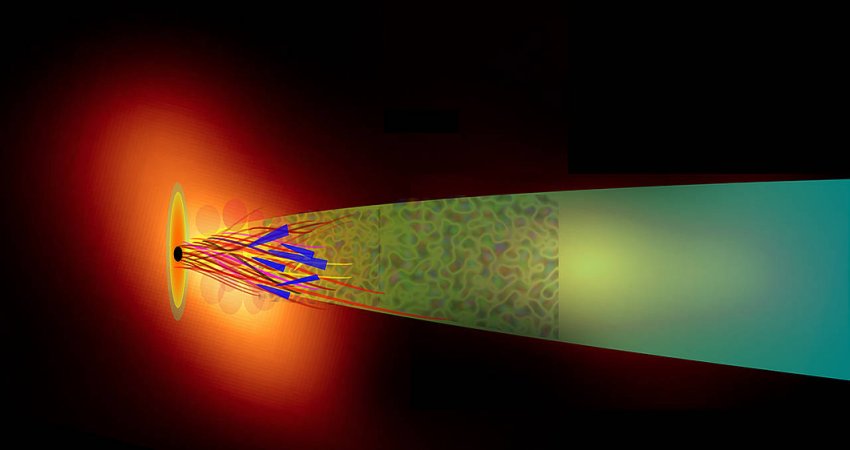Some Secrets Of Stellar Geysers Revealed By 3-D Simulations
MessageToEagle.com – Astrophysicists finally have an explanation for the violent mood swings of some of the biggest, brightest and rarest stars in the universe.
The stars, called luminous blue variables, periodically erupt in dazzling outbursts nicknamed “stellar geysers.” These powerful eruptions launch entire planets’ worth of material into space in a matter of days. The cause of this instability, however, has remained a mystery for decades.

Now, new 3-D simulations suggest that turbulent motion in the outer layers of a massive star creates dense clumps of stellar material. These clumps catch the star’s intense light like a solar sail, erupting material into space. After jettisoning enough mass, the star calms down until its outer layers re-form and the cycle begins anew, the astrophysicists say.
“This finding represents an important step forward in understanding the life and death of the biggest stars in the universe,” Matteo Cantiello, an associate research scientist at the Center for Computational Astrophysics at the Flatiron Institute in New York City, said in a press release.
“These massive stars, despite their small number, largely determine the evolution of galaxies through their stellar winds and supernova explosions. And when they die, they leave behind black holes.”
Identifying the cause of the stellar geysers is significant because every extremely massive star probably spends part of its life as a luminous blue variable.
Cantiello, along with Yan-Fei Jiang of the Kavli Institute for Theoretical Physics at the University of California, Santa Barbara, and colleagues created a detailed, three-dimensional computer simulation of how matter, heat and light flow and interact within supersize stars.
The calculations involved required more than 60 million computer processor hours to solve.
The simulation suggests that supersize eruptions of some of the biggest, brightest stars in the universe result from clumps of helium-rich material launched spaceward by intense light. Such eruptions occur over timescales ranging from days to weeks as the star churns and its brightness fluctuates.
The team estimates that such stars can shed around 10 billion trillion metric tons of material each year, roughly double the Earth’s mass.
“We had to implement all of these physics to see, with our own eyes, that this process—that we didn’t expect to be important—would turn out to be key to understanding these violent eruptions and the evolution of these massive stars,” Cantiello said.
MessageToEagle.com










